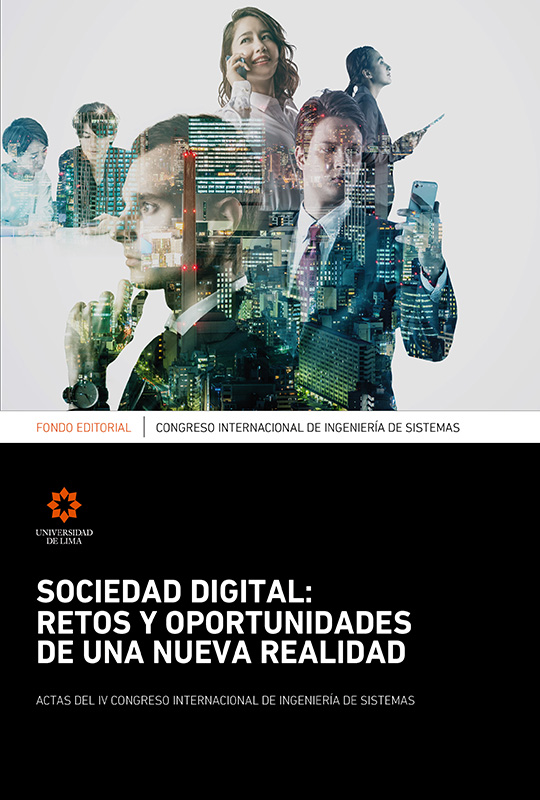Modelo de reconocimiento de variables que influyen en el rendimiento de transacciones de RDBMS aplicando PCA y PCR
DOI:
https://doi.org/10.26439/ciis2021.5582Palabras clave:
RDBMS, algoritmo de aprendizaje de máquina estadístico, PCA, PCR, rendimiento de ejecución de sentencias SQL, administración del rendimientoResumen
El conocimiento de los factores que influencian la eficiencia de un sistema es importante para su correcta administración y mantenimiento. Múltiples organizaciones soportan sus operaciones con aplicaciones que interactúan con un sistema de gestión de bases de datos relacional (RDBMS), las cuales pueden mejorar su eficiencia a través del conocimiento de los factores que influyen en el rendimiento de las ejecuciones de las sentencias SQL que conforman sus cargas de trabajo, especialmente las cargas de trabajo generadas por aplicaciones implementadas en ambientes de producción que manifiestan recurrencia en el tiempo. El artículo de investigación que se presenta propone un modelo de reconocimiento de factores que afectan el rendimiento de las ejecuciones de las sentencias SQL que se procesan en un RDBMS y discute la implementación de una técnica de predicción de métrica de rendimiento, valiéndose de los algoritmos de aprendizaje de máquina estadístico denominados Análisis de Componentes Principales (PCA) y Regresión de Componentes Principales (PCR), que explotan la información de los planes, estadísticas y métricas generadas durante el ciclo de vida de las ejecuciones de las sentencias SQL.
Descargas
Referencias
Anderson, M. R., y Cafarella, M. (2016). Input Selection for Fast Feature Engineering. 2016 IEEE 32nd International Conference on Data Engineering (ICDE), 577-588. https://doi.org/10.1109/ICDE.2016.7498272
Badrinath Krishna, V., Weaver, G. A., y Sanders, W. H. (2015). PCA-Based Method for Detecting Integrity Attacks on Advanced Metering Infrastructure. En J. Campos y B. Haverkort (Eds.), Quantitative Evaluation of Systems: 12th International Conference, QEST 2015 (pp. 70-85). Springer, Cham. https://doi.org/10.1007/978-3-319-22264-6_5
Bontempi, G., y Kruijtzer, W. (2002). A Data Analysis Method for Software Performance Prediction. Proceedings 2002 Design, Automation and Test in Europe Conference and Exhibition, 971-976. https://doi.org/10.1109/DATE.2002.998417
Brauckhoff, D., Salamatian, K., y May, M. (2009). Applying PCA for Traffic Anomaly Detection: Problems and Solutions. IEEE INFOCOM 2009, 2866-2870. https://doi.org/10.1109/infcom.2009.5062248
De, P., Sinha, A. P., y Vessey, I. (2001). An Empirical Investigation of Factors Influencing Object-Oriented Database Querying. Information Technology and Management, 2, 71-93. https://doi.org/10.1023/A:1009934820999
Duggan, J., Cetintemel, U., Papaemmanouil, O., y Upfal, E. ( Junio del 2011). Performance Prediction for Concurrent Database Workloads. Proceedings of the 2011 ACM SIGMOD International Conference on Management of data (SIGMOD '11), 337-348. https://doi.org/10.1145/1989323.1989359
Fortier, P. J., y Michel, H. E. (2003). Computer Systems Performance Evaluation and Prediction, Digital Press.
Ganapathi, A., Kuno, H., Dayal, U., Wiener, J. L., Fox, A., Jordan, M., y Patterson, D. (Marzo del 2009). Predicting Multiple Metrics for Queries: Better Decisions Enabled by Machine Learning. 2009 IEEE 25th International Conference on Data Engineering, 592-603. https://doi.org/10.1109/icde.2009.130
Ganapathi, A. S., Kuno, H. A., y Dayal, U. (2015). Predicting Performance of Multiple Queries Executing in a Database (US 9,189,523 B2). United States Patent and Trademark Office.
Giusto, P., Martin, G., y Harcourt, E. (2001). Reliable Estimation of Execution Time of Embedded Software. Proceedings Design, Automation and Test in Europe. Conference and Exhibition 2001, 580-588. https://doi.org/10.1109/DATE.2001.915082
Hadi, A. S., y Ling, R. F. (1998). Some Cautionary Notes on the Use of Principal Components Regression. The American Statistician, 52(1), 15-19. https://doi.org/10.1080/00031305.1998.10480530
James, G., Witten, D., Hastie, T., y Tibshirani, R. (2013). An Introduction to Statistical Learning: with Applications in R. Springer.
Kleinrock, L. (1976). Queuing Systems, Volume II: Computer Applications. John Wiley & Sons. Lam, H. T., Thiebaut, J. M., Sinn, M., Chen, B., Mai, T., y Alkan, O. (2017). One Button Machine for Automating Feature Engineering in Relational Databases. arXiv. http://arxiv.org/abs/1706.00327
Lee, H., Park, Y. M., y Lee, S. (2015). Principal Component Regression by Principal Component Selection. Communications for Statistical Applications and Methods, 22(2), 173-180. https://doi.org/10.5351/CSAM.2015.22.2.173
Mikolajczyk, Y., y Schmid, C. (2005). A Performance Evaluation of Local Descriptors. IEEE Transactions on Pattern Analysis and Machine Intelligence, 27(10), 1615-1630.
Panda, R., Erb, C., Lebeane, M., Ryoo, J. H., y John, L. K. (Octubre del 2015). Performance Characterization of Modern Databases on Out-of-Order CPUs. 2015 27th International Symposium on Computer Architecture and High Performance Computing, 114-121. https://doi.org/10.1109/SBAC-PAD.2015.31
Schkolnick, M., y Tiberio, P. (1985). Estimating the Cost of Updates in a Relational Database. ACM Transactions on Database Systems (TODS), 10(2), 163-179. https://doi.org/10.1145/3857.3863
Shawe-Taylor, J. (2004). Kernel Methods for Pattern Analysis. Cambridge University Press. https://doi.org/10.1017/CBO9780511809682
Shyu, M. L., Chen, S. C., Sarinnapakorn, K., y Chang, L. (2003). A Novel Anomaly Detection Scheme Based on Principal Component Classifier. Defense Technical Information Center. https://apps.dtic.mil/sti/citations/ADA465712
Smith, C. U., y Williams, L. G. (2000). Performance and Scalability of Distributed Software Architectures. An SPE approach. Parallel and Distributed Computing Practices, 3(4).
Woodside, M., Franks, G., y Petriu, D. C. (Mayo del 2007). The future of Software Performance Engineering. Future of Software Engineering (FOSE'07), 171-187. https://doi.org/10.1109/FOSE.2007.32
Yu, P. S., Chen, M. S., Heiss, H. U., y Lee, S. (1992). On Workload Characterization of Relational Database Environments. IEEE Transactions on Software Engineering, 18(4), 347-355. https://doi.org/10.1109/32.129222


